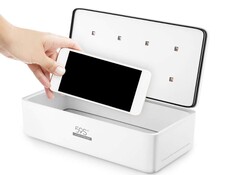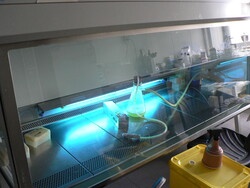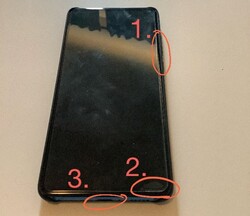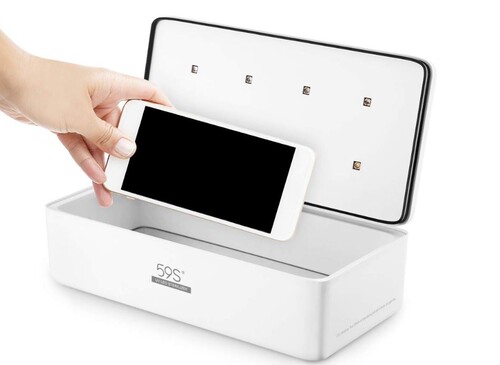Of Viruses and Smartphones
The insecurity and helplessness at large caused by the current situation and the most recent developments regarding COVID-19 are undeniable. At the same time, people are looking increasingly at ways to disinfect their surroundings. Generally speaking, disinfecting small devices such as smartphones is not a bad idea per se. After all, they can hold multiple bacteria on their surface. According to Judy Guzman-Cottrill of the Oregon Health & Science University that includes pathogen Staphylococcus species as well.
Smartphones, watches, smartwatches, and even jewelry can thus be considered zone breakers. Most people will probably wash their hands when they enter their apartment but then immediately contaminate the same by picking up their smartphone that has previously been used outdoors after touching various objects, such as hand rails, ticket machines, etc.
Disinfecting your smartphone using the usual disinfectants is possible yet will cause not only displeasing odors but also waste precious disinfectant. Alternatively, some manufacturers promise quick sterilization via UV light.
UV Light: More than Just a Sunburn
First things first: UV light is a well-used and proven method for disinfection. The author of this piece has become very familiar with it thanks to sterilized workbenches that tend to get exposed to UV light for a specific amount of time after work. This high-energy radiation directly affects DNA – aka the genotype – and deactivates the cell, thereby preventing the disease-causing agent to reproduce.
UV light has several advantages. Not only is it casual but it also works in a physical way. It thus prevents resistance of selected microorganisms such as occurs for example when using antibiotics. Unlike other ways of disinfection, the strain put on the object is comparatively small. Given that UV lights tend to suffer from decreased performance over time, they are regularly exchanged in both academic and medical fields.
Home-Use Products
We took a look at the specifications of some of the models currently available in an attempt to classify them. The products in question are a mercury vapor lamp but LED-based emitting UV-C light, whose effectiveness has been proven time and again. Most of the sterilizers are small boxes in which you place the objects to be disinfected. In our opinion these boxes are much better than handheld UV lamps. The latter are more versatile but the radiation time cannot be controlled as well.
The Sunuv S2 (which according to our research should be identical to the Emmi-Steri UVC LED) comes with a bracket that changes color under the influence of UV radiation. This is a great way to test the effectiveness of the disinfection in progress. As it is only equipped with LEDs on one side, repeated disinfection of e.g. the backside of a smartphone, would certainly be advisable. Taking some leeway as well as a decreasing LED performance into account we cannot verify whether the preconfigured three-minute treatment is sufficient.
It is important to note that the shape of the object to be disinfected is relevant for the effectiveness of the procedure. Take a colleague’s smartphone for example. The gap between the mobile phone itself and the protective cover is just as hard to disinfect as the buttons (1). In addition, it is not quite clear whether or not the protective display cover even allows UV-C to penetrate deep enough to reach the actual display itself (2). Last but not least we have no way to tell whether the inside of the speakers or the USB port were adequately disinfected as well.
Verdict
Long story short: While we would not advise you against the use of these sterilizers you still should remain careful and distrust the deceptive and false sense of security provided thereby. With regard to COVID-19 current research indicates that the main transmission vector appears to be droplet instead of surface infection. Under these circumstances disinfecting your smartphone might not be as important as it seems.








